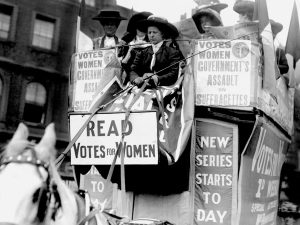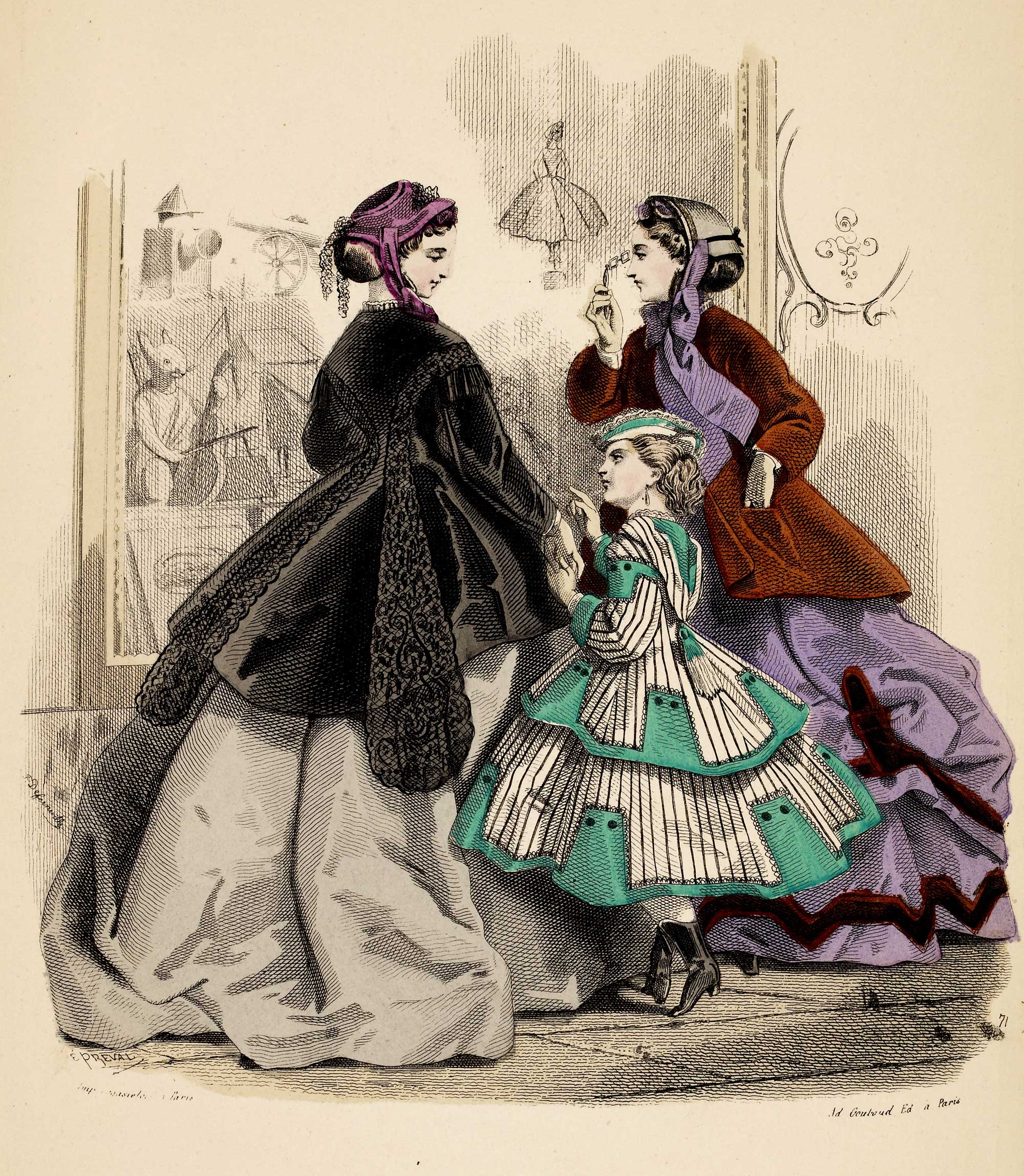The Angels Who Broke Down the Prison Bars: Women’s Movements in the 19th Century
Part 2Arezoo Izadi
With the emergence of the Victorian era, heavy limitations were not lifted from women compared to the last centuries (“Victorian Era Women’s Rights: The Victorian Era”). In fact, things got worse before they got better.
The image of the ideal woman in the 19th Century was created when Coventry Patmore published his narrative poem, “The Angel in the House”, describing a female protagonist who is charming and submissive with no individuality, in other words, “the perfect wife” (Cleary). Now, women had to fulfill the role of ‘Angel in the House’ on top of everything else and accomplish various skills in order to find a suitable husband (Hughes).
Gender roles, therefore, were even more defined and limited than before. The concept of ‘separate spheres’ was patriarchy’s most novel invention. The idea of men and women “only coming together at breakfast and again at dinner” (Hughes). This concept was based on the essentialist belief that women are naturally and physically weaker but morally higher than men (Hughes). The patriarchal ideology proposed that women and men were two much different categories. Men could be active in public as they had reason and independence. In contrast, women had to be in private and at home as them being emotional, submissive and passive made them unfit to act in public. In other words, women were easier to oppress and control if limited to staying in the house (“Victorian Era Women’s Rights: The Victorian Era”). Thus, they must remain in their domestic role, protect the house for their weary husbands who carry out the labor all day long and bring up the next generation as the Victorian women’s biggest goal was supposed to be bearing children as patriarchy posed the practice as sacred and honorable (“Victorian Era Women’s Rights: The Victorian Era”). This exact role created for women was used as an excuse for not granting them the right to vote later on (Hughes).

Annie Kenney and Christabel Pankhurst
Women’s limitations were also evident in the clothing codes they had to adhere to. As Tyson recounts, for instance, wearing tight corsets was considered to be very feminine. Doing so prevented women from breathing easily and getting enough oxygen. That is why they could not do heavy work or run, for they would get what was considered ‘the vapors’, meaning that they would experience “shortness of breath or slight fits of fainting”. This would result in women being deemed as too frail to be active, especially in public life (84).
Marriage, for them, was still no better than slavery. The woman, her identity, individuality, possessions and body were fully in control of the husband. It was not until 1870 with the Married Women’s Property Act that women were allowed by law to keep their possessions after marriage. At this time physical and sexual abuse had no reprecussions for the husband. The law to prevent the husband from imrprisoning his own wife in the house was passed in 1891, and the law that “denied the right to rape her” was passed, unfathomingly, a hundred years later in 1991 (“Victorian Era Women’s Rights: The Victorian Era”).
Not only women, but their children were also the property of the husband. If they were to get a divorce, the man would have custody of the children. From 1839, women could have the custody of the child provided that they were under seven. The age was raised to 16 later in 1873. Regardless, the father was the only legal guardian. It should be noted that at this time, single women could actually own property and possessions. The question, therefore, remains that why would a single woman who is able to own property in the Vicorian era give this right up and be limited to marriage? The answer is pretty obvious when you take into account the atmosphere of the time. Apart from the fact that marriage was an “expected duty”, society did not allow single women to earn their own living. Therefore, getting married and being dependent remained the only choice that women had for survival (“Victorian Era Women’s Rights: The Victorian Era”).
Divorce came not easy to them as well, though it was easier since 1857 where women had the right to keep their own possessions after the divorce. Generally, if a man wanted to divorce his wife, he did so “on the simple grounds of her adultery”. However, when a women wanted to get a divorce, she had to bring proof about the husband’s adultery, rape, bigamy and etc,. These laws did not change till 1923 (“Victorian Era Women’s Rights: The Victorian Era”).
Despite the efforts of activists in the previous centuries fighting for women’s education as seen in Part One of the series, at the beginning of the Victorian era, only the wealthy boys could go to school. A governess (a prominent occupation for women at the time) would teach the wealthy girls at home. Their lessons were limited to duties that were expected of women. This changed with the passing of the law in 1870 which stated that all children were mandated to attend school (“Victorian Era Women’s Rights: The Victorian Era”).
The first colleges set up for women were Girton and Newnham college in 1869 and 1872 respectively. These were not recognized by authorities, and it was not until 1882 that women were actually allowed to have access to degree examinations (“Victorian Era Women’s Rights: The Victorian Era”).
Women’s occupations were varied although it was believed that they should stay at home and fulfill their feminine duties. It was actually crucial for the working class women to work in order to survive. They would carry out works like domestic service or even factory labor (“Victorian Era Women’s Rights: The Victorian Era”).
Despite all these, It was in the mid 19th Century that the first feminist movement or the first wave of feminism started, lasting till 1920. The result of this movement was that women were finally granted the basic right to vote which had been previously limited to half of the population, men (Garrity and Cuerden).
Although the women’s suffrage movement was founded in the next century, it had been in work years before that. 19th Century women had grown weary of being limited to sexual beings, only “defined by their biology”, defined by being the opposite of what a man was, by being the Other. That is why, they started to campaign against male domination and fought for their right for education and their right to vote (“Victorian Era Women’s Suffrage: The Victorian Era”).
One would think that having a woman as the ruler of the nation would speed up the process and strengthen the fight. However, when she found out that a Viscountess had become one of the presidents for a group of the women’s suffrage movement, Queen Victoria called the movement “wicked folly” in a private letter and stressed that if women want to “unsex themselves” and ask for equality with men, they shall become “the most hateful, heathen and disgusting of beings and would surely perish without male protection” (“Victorian Era Women’s Suffrage: The Victorian Era”).
In the years of their courageous fight, multiple petition acts and groups were established. Namely, the Sheffield Female Political Association or the National Society for Women’s Suffrage (NSWS) founded in 1868, which was the first step that gave unification to the women’s suffrage movement (“Victorian Era Women’s Suffrage: The Victorian Era”). The movement was widespread in the decade between 1870 and 1880, where hundreds of thousands of signatures were collected in favor of gaining the right to vote for women. Despite this and the issue being debated year after year in the House of Commons, and in spite of the fact that the votes in Parliament, from 1886, were in favor of women, no law was passed granting them the right to vote (“Victorian Era Women’s Suffrage: The Victorian Era”).

Women’s Suffrage Movement, February 1918
Support for this movement continued to grow in later years despite the many illogical arguments that the parliament would find to postpone passing a law (“Victorian Era Women’s Suffrage: The Victorian Era”). Baseless arguments such as, women being “naturally” subordinated to men according to religious books, women being too delicate for politics and public matters, or women’s rights being already protected by men. Despite the movement’s widespread support, the government did not pass the law even at the turn of the century. It was only after women strongly contributed to the workplace during World War I that a law was passed in order to allow women the vote. However, the law still did not let women over 30 vote. In fact, the voting age became equal for both men and women ten years later in 1928, which happened to be 60 years after the suffrage movement began its campaigning (“Victorian Era Women’s Suffrage: The Victorian Era”).
Much like the last centuries, women did not cease to be active in other fields, specifically literature. Due to the heavy stigma around women authors and thinkers and it not being the norm for women to earn a living, women authors would publish their works under a pseudonym. This increased their chances of becoming successful authors, and it is not surprising that some of the best pieces of literature in the 19th Century are written by women (Cruikshank).
Jane Austen, known for her classics, signed her first published novel Sense and Sensibility (1811) with “By a Lady”. When she published Pride and Prejudice (1813), she attributed it to “the author of Sense and Sensibility”. Consequently, she published her next two works, Mansfield Park (1814) and Emma (1815) anonymously. It was only after her death that her brother published Persuasion (1817) and Northanger Abbey (1817), revealing her identity (Cruikshank).
All the Brontë sisters, though brilliant authors, used pseudonyms to avoid prejudice. Charlotte, Emily and Anne Brontë were Currer, Ellis, and Acton Bell respectively (Cruikshank). Some of their best known works are Jane Eyre (1847), Wuthering Heights (1847) and Agnes Grey (1847) respectively.
One of the best known authors of the time, Mary Ann Evans, best known for her groundbreaking novel Middlemarch (1871), published her works as George Eliot. Although she was more accepted in literary communities as a result of her relationship with the critic George Henry Lewes, she was still criticized and chose to keep the pseudonym (Cruikshank).
Women’s movements and struggles would continue into the next century, with two World Wars and many other turbulences. The next century would include the first, second and third waves of feminism as well as the emergence of feminism as a literary theory which will be explored in the next parts.
Works Cited
Cleary, Rose. “The Angel in the House: A Victorian Ideal of Domesticity.” The Cultural Me, 16 September 2018, https://thecultural.me/the-angel-in-the-house-a-victorian-ideal-of-domesticity-945805. Accessed 15 December 2022.
Cruikshank, Drew. “Authorship and Anonymity: Women Writers of the Nineteenth Century — Dalnavert Museum.” Dalnavert Museum, 7 August 2020, https://www.friendsofdalnavert.ca/blog/2020/8/7/authorship-and-anonymity-women-writers-of-the-nineteenth-century#_edn1. Accessed 15 December 2022.
Garrity, Mary, and Adam Cuerden. “۱۹th Century Feminist Movements – Introduction to Women, Gender, Sexuality Studies.” Open Books, https://openbooks.library.umass.edu/introwgss/chapter/19th-century-feminist-movements/. Accessed 15 December 2022.
Hughes, Kathryn. “Gender roles in the 19th century.” The British Library, 15 May 2014, https://www.bl.uk/romantics-and-victorians/articles/gender-roles-in-the-19th-century. Accessed 15 December 2022.
Tyson, Lois. Critical Theory Today: A User-friendly Guide. Routledge, 2014.
“Victorian Era Women’s Rights: The Victorian Era.” VL McBeath, https://www.valmcbeath.com/victorian-era-england-1837-1901/victorian-era-womens-rights/. Accessed 15 December 2022.
“Victorian Era Women’s Suffrage: The Victorian Era.” VL McBeath, https://www.valmcbeath.com/victorian-era-england-1837-1901/victorian-era-womens-suffrage/. Accessed 15 December 2022.


